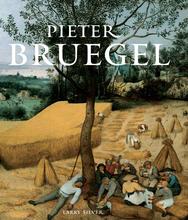Pieter Bruegel The Elder’s The Gloomy Day is part of a series of six paintings depicting the different seasons of the year. Though only five still survive.
The series is aptly called Seasons, and the remaining pictures are named Hunters in the Snow, The Return of the Herd, Haymaking, and The Harvesters.
But before we get into some of the dope things on display in this painting, we gotta talk about my dude’s MC name for a second. Pieter Bruegel The Elder?! That’s the hottest name in the game. With a name like that, you’ve gotta drop that heat on the canvas. No excuses.
And I mean, I guess he did. Which is why a wealthy guy by the name of Nicolaes Jonghelinck commissioned Bruegel to make the set of paintings. It’s kinda like Martin Shkreli buying that Wu Tang album and hiding it from the world. That’s not to say that Jonghelinck is a dick like Shkreli, but to get a personalized piece of art by one of the hottest in the game is without a doubt a flex. That’s a lot of clout.
If The Gloomy Day was on an album featuring all our seasons, it would probably be the second track. And it would be somber and reflective, most likely dealing with loss and maybe regret. But it would have a glimmer of hope toward the end to lighten up the mood. That’s because it takes place in the winter, the time of year when people are bundled up or warmth, and the life and vibrancy of spring and summer is a distant memory.
You might be thinking, “Yo, this is a dope landscape that really does a great job of effectively telling a story in the foreground, mid-ground, and background." And if you thought that, you’d be very observant, and very right. Bruegal the Elder got his landscape heat from a painter named Joachim Patinir, who died around the time Bruegel was born. The major difference between the two was that Bruegel added people to his landscapes, making them more intimate for the audience.
As I mentioned before, this is from a series of paintings that depict six various stages of the year, or six seasons. The Gloomy Day’s lack of vegetation on the ground and in the trees, bring us into a convincing winter, but there’s another reason it feels authentic. By including people in his landscape paintings, Bruegel made them more snapshots of a scene rather than a study of an area. The Gloomy Day is no exception. And it’s the people that really sell what season it is. The Gloomy Day’s got a few dudes pollarding a tree, which means they’re stripping the top branches to speed up the growth of leaves and maybe some fruit. There’s also a few boats out in the sea. Maybe they’re fishing for food because there’s nothing growing on the land. Looks like they’re having a hard time in the rough waters, though.
As authentically winter as The Gloomy Day is, the foreshadowing of spring comes with tinges of green sprinkled within the water and the sky. That dark laurel color simultaneously makes this scene live up to its name, while planting the seeds of the coming spring into the ground and in the minds of the viewer.
















This painting has a lot of characteristics that help to develop the "Gloomy Day" scene. The bare trees with crooked branches that point to the dark and gloomy sky show that a storm is coming. In the background, there are mountains that point straight to the sky as well. The majority of the items are point to the dark, cloud-covered sky. The colors of the painting are dark, shadowy colors. The little pops of color do not add much happiness to the painting as a whole, In the front, there are people doing random tasks, but they all look sick or exhausted. Behind the people, there is a body of water with unsettled waves. The water is busy with birds diving in and out with the dark sky above. This looks like a small village, and not a wealthy village. The houses look as if they are older and have cheaper finishings, the roofs look as if they are covered in moss. The village people are preparing for the storm that is coming so they can protect their space to the best of their abilities. The trees in comparison to the people are very tall. They are also skinny trees, so in a storm they can move around a lot, therefore explaining the tree laying down in front of the people. The overall feeling of this painting is a stormy day in which the village people have to clean up and prepare for more storms to come. The clouds are allowing for a small amount of sunlight to come through, but the majority of the sky is still covered.